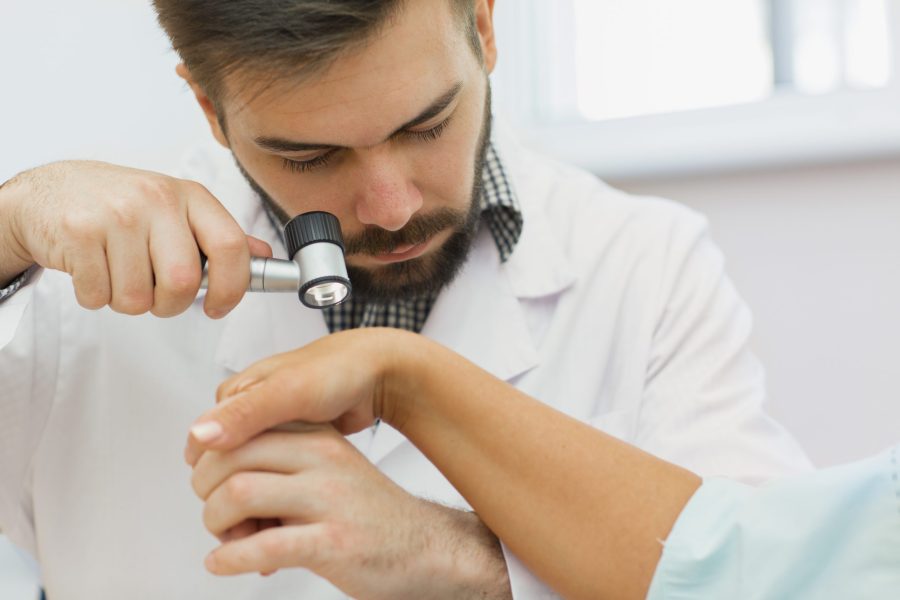Everyone suffers from some form of skin condition at some point in their life. Whether it’s acne as they go through puberty or dry skin as the weather cools and the wind becomes dryer. However some skin-related issues aren’t as simple to fix as lotion or acne creams, sometimes they require the expertise of a professional skin doctor; a dermatologist.
Dermatologists diagnose and treat conditions that affect your hair, nails, and skin. They can also treat conditions that affect the soft, delicate tissue that lines your mouth, eyelids, and nose. It is estimated that 44 million people visit dermatologists each year, whether for a checkup or to treat actual skin-related issues.
Recognizing the Signs and Symptoms of Serious Health Issues
Dermatologists do more than simply study or help fight acne, or advise on how to make your nails or hair healthier and look better. They are trained to recognize the symptoms and signs of potentially life-threatening health issues that have a tendency to first show up as blemishes on your skin.
For example, if you have diabetes, symptoms may first show up on your skin in the form of a rash, odd discoloring, or your skin taking on an almost velvety texture. Your dermatologist might be the first healthcare provider to tell you that you likely have this disease. Several other life-threatening conditions, including some types of cancer, are first noticed on the skin.
What Does a Dermatologist Do?
Dermatology can be divided into three categories. Medical dermatologists diagnose and treat conditions affecting your skin, such as acne, rosacea, and psoriasis. Surgical dermatologists perform minor surgical procedures, like doing skin biopsies, removing skin cancer, or removing moles.
Finally, dermatology has a cosmetic side. This includes treating wrinkles and other skin issues, such as dark spots or discoloration that affect your appearance. People turn to a dermatologist when they start losing their hair. A dermatologist can administer laser hair removal, fillers, and chemical peels. Therefore, you might visit a dermatologist to improve your appearance, diagnose a concerning skin condition, or because you need surgical intervention. Dermatologists can treat thousands of conditions that affect your hair, skin, and nails.
What Types of Procedures Does a Dermatologist Perform?
Dermatologists perform biopsies to diagnose or rule out certain conditions. Laser therapies can remove tattoos, acne scars, warts, wrinkles, and unwanted hair.
Cryotherapy uses freezing temperatures to remove tumors, skin tags, and warts. Surgical excision can also remove moles, lesions, skin tags, and other blemishes. All of this is done with anesthesia, so it is pain-free.
Work with a Trained and Qualified Dermatologist
Dermatologists receive extensive training. They have four years of college, four years of medical school, a one-year internship, and a three-year residency. By the time they can work on patients, they have studied for more than a decade and have completed numerous tests and exams. Still, not all dermatologists are created equal. You owe it to yourself to find the highest skilled and board-certified dermatologist to help you with your skin issues.
Your skin is your largest organ. It protects you from the environment and disease. It can give the first warning signs of serious illness. You can return the favor by protecting your skin, hair, and nails by visiting dermatologists as soon as you see the slightest indication that something is wrong.

